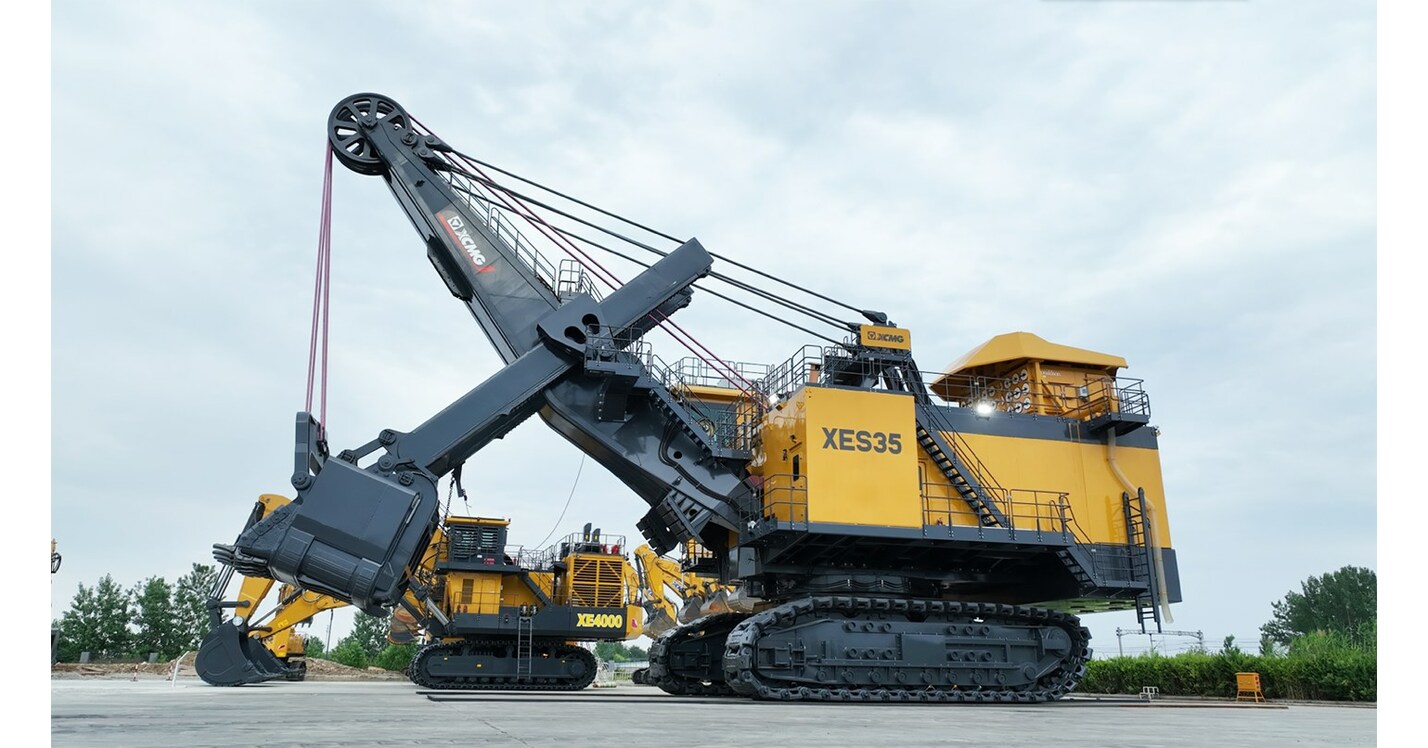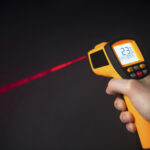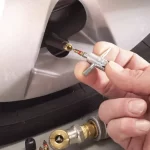A power shovel, also known as an excavator or digger, is a large machine that is used for excavation and earthmoving work. Power shovels have been used in construction and mining operations for over a century.
The history of power shovels dates back to the late 1800s. William Otis invented and patented a steam shovel in 1839, which was one of the earliest forms of powered excavation equipment. In the 1880s, power shovels began to be more widely used, especially in mining and railway construction. These early power shovels were powered by steam engines and cables, and had a shovel arm with a bucket attached that was used to dig and move earth.
Over the decades, power shovels evolved with new designs and technologies. Hydraulic power shovels were introduced in the 1950s, which allowed for more power and precision. The modern hydraulic excavator emerged in the 1960s and became the dominant type of power shovel. Excavators use hydraulic fluid power to operate the boom, arm, bucket, and cab functions.
Power shovels are made in a variety of sizes, from compact to large mining shovels. The bucket sizes can range from 0.5 cubic yards up to 70 cubic yards. They can be used for digging trenches, holes, foundations; loading materials into trucks; demolition work; forestry and land clearing; underwater excavation; and more. The most common applications are in the construction, mining, and excavation industries.
Power shovels provide an efficient means of moving and relocating large amounts of dirt, rocks, sand, and other materials. Their ability to dig, lift, and dump materials with precision and power have made them an indispensable tool for major earthmoving projects. With continued innovation and new designs, power shovels will remain an important piece of heavy equipment into the future.
Table of Contents
How Power Shovels Work
Power shovels are heavy construction equipment used for excavation and material handling. They consist of several key components that work together to dig, lift, and move earth, rock, and other materials.
Boom
The boom is the long arm that extends outward from the rotating upper body of the power shovel. The outer end of the boom connects to cables that lift the shovel bucket. By adjusting the boom angle, the operator can control the reach and height of the shovel bucket. Modern power shovels use hydraulics to smoothly raise, lower, and angle the boom.
Bucket
The bucket attaches to the end of the boom and does the actual digging. It has a curved front with teeth or blades along the bottom edge to scoop and shear material. Power shovel buckets come in various sizes, shapes, and capacities to match the required digging conditions and materials. The bucket connects to hoist cables that raise it to dump out the load.
Cab
The operator’s cab sits atop the rotating upper body, providing a view of the work area. The cab contains controls to operate the machine, such as joysticks and pedals to control the boom, bucket, and propulsion. Modern cabs are enclosed for protection from noise and debris. Some power shovels have climate-controlled cabs for operator comfort.
Tracks/Wheels
Power shovels are equipped with either crawler tracks or wheels to propel and support the machine. Crawler tracks provide stability for digging and spreading the machine’s considerable weight over soft ground. Wheeled models offer faster travel between work areas. Large flotation tires help prevent sinking into soft terrain.
Power Source
Most power shovels use a diesel engine to drive hydraulic pumps and electric generators. The hydraulic system powers the boom, bucket, swing, and propulsion. Onboard electricity runs lights, radios, controls, and other accessories. Some small power shovels may use gasoline engines, battery-electric drive, or external electric power.
Types of Power Shovels
Power shovels come in various types depending on their power source, mobility, and size. The main types include:
Hydraulic Power Shovels
Hydraulic power shovels are powered by hydraulic fluid that is pressurized by diesel or electric motors. They use hydraulic cylinders to provide power for the boom, arm, bucket, swing, and propel functions. Hydraulic power shovels are known for their high productivity and precision control.
Diesel Power Shovels
As the name suggests, diesel power shovels use diesel engines as their power source. The diesel engine powers hydraulic pumps to activate the shovel’s functions. Diesel power shovels are valued for their ability to provide consistent power and torque.
Electric Power Shovels
Electric power shovels utilize electricity to power electric motors that activate hydraulic pumps. They offer the advantages of lower emissions and noise compared to diesel models. However, they require access to electrical infrastructure.
Crawler Power Shovels
Crawler power shovels run on continuous tracks similar to bulldozers and tanks. The tracks provide stability and allow them to operate on uneven terrain. However, they are slower than wheeled models.
Wheeled Power Shovels
Wheeled power shovels are mounted on tires, giving them greater mobility and speed compared to crawler models. However, they require firm, level ground to maintain stability.
Mini Power Shovels
Mini power shovels, also called compact excavators, are much smaller in size for use in confined spaces. They typically range from 1 to 6 tons in weight with shorter booms and arm lengths.
Major Parts of a Power Shovel
Power shovels, also known as excavators or diggers, have several major components that work together to perform digging and lifting tasks.
Boom
The boom is the long arm at the front of the power shovel. It can swing left and right and is attached to the rotating upper structure called the house. The boom gives the shovel its reaching capabilities.
Stick
The stick, sometimes called the dipper stick, is the arm attached to the end of the boom. It can move up and down thanks to hydraulic cylinders. At the end of the stick is where the bucket attaches.
Bucket
The bucket is the component that scoops up and carries material. There are different bucket types like digging buckets, cleanup buckets, and grapple buckets. Power shovels use hydraulic power to operate the bucket for digging, lifting, and dumping material.
Cab
The cab sits atop the rotating house structure and contains the operator’s controls. From inside the protective cab, the operator can control all shovel movements and functions. Modern power shovel cabs have ergonomic designs for operator comfort.
Counterweight
The counterweight is the heavy block on the back of the house. It provides balance by offsetting the weight of the boom, stick, bucket, and any load the shovel is carrying. The counterweight keeps the shovel from tipping forward.
Power Unit
The power unit provides power for the drive system and hydraulics. This is usually an engine mounted to the rear of the rotating upper structure. Diesel engines are common in modern power shovels.
Undercarriage
The undercarriage includes the base, tracks, rollers, idlers, and sprockets that allow the shovel to move and stabilize itself. Wide triangular track pads distribute weight for stability while working or moving across terrain.
Uses of Power Shovels
Power shovels are versatile machines that are used for a variety of purposes. Some of the main uses and applications of power shovels include:
Construction
Power shovels are extensively used in the construction industry for excavation and earthmoving work. They can dig foundations, trenches, holes and clear and level sites for construction projects. Power shovels allow contractors to move large amounts of earth and material quickly and efficiently. They are commonly used to dig basements and clear areas for roads, bridges, buildings and other infrastructure projects.
Mining
Power shovels play an integral role in surface mining operations. They are used to remove and load overburden as well as extract coal, ores, and other minerals from open pit mines. The large bucket capacity and power of power shovels make them well-suited for high volume earthmoving in mining. They can efficiently scoop and load blasted material into haul trucks for removal.
Excavation
Excavation contractors rely on power shovels for digging foundations for buildings, swimming pools, basements, utility lines and more. Power shovels can excavate down to depths of 30 feet or more. Their ability to efficiently dig and load earth in confined spaces makes them a preferred excavation tool. They are also used for trenching work.
Demolition
Power shovels equipped with demolition attachments like hydraulic hammers and shearers can be used for structure demolition. The breaker on the arm can demolish concrete and the shearer can cut through steel. Power shovels provide the reach and power required for controlled demolition of buildings and other structures.
Landscaping
Landscaping contractors use small power shovels for grading yards, digging ponds, and moving boulders, trees and shrubs. Power shovels allow landscapers to reshape terrain and move heavy materials with control and precision. They are useful for large landscaping projects involving major earthworks.
In summary, power shovels are versatile heavy equipment used extensively in construction, mining, excavation, demolition and landscaping applications where significant digging and earthmoving is required. Their high productivity and efficiency make them an indispensable tool for these industries.
Advantages of Power Shovels
Power shovels provide many advantages over manual shoveling or smaller construction equipment. Here are some of the main benefits:
Power
Power shovels are equipped with extremely powerful hydraulic systems and engines. This allows the shovel to generate tremendous digging forces and lift incredibly heavy loads. Whereas a construction worker may struggle to shovel a few pounds, a power shovel can easily dig and move tons of material at a time. This makes them ideal for large excavation and earthmoving projects.
Reach
The arms of power shovels can extend 20-50 feet to reach materials. This allows them to dig below the surface as well as reach up high. Their long reach enables them to excavate areas that would be inaccessible for manual laborers. Power shovels can dig precisely and make controlled movements even at a distance.
Precision
An experienced power shovel operator can control the shovel’s bucket with great precision. By carefully coordinating the boom, arm, and bucket cylinders, the shovel can be manipulated to scoop and place materials very accurately. This level of precision is critical for excavating around existing structures, digging trenches, shaping landscapes, and more.
Versatility
Power shovels are highly versatile machines. By attaching different buckets or attachments, they can perform various tasks like digging, trenching, demolishing, dredging, lifting, etc. Their ability to switch between functions allows them to take on multiple roles on a jobsite. This versatility makes them a smart investment for contractors.
Productivity
With their power, reach, and precision, power shovels can achieve much higher productivity rates than manual labor. A single power shovel may be able to do the work of dozens of workers with hand tools. Their efficiency leads to faster project timelines and lower labor costs. Contractors rely on power shovels to improve productivity and save money.
Power Shovel Operation
Operating a power shovel requires coordination and skill. The operator sits in a cab above the shovel and controls all of the machine’s movements. Here are some of the main controls:
Boom – A long lever controls the boom, which is the arm that holds the bucket. Pushing the lever forward lowers the boom, while pulling it back raises it. Precise control of the boom allows the operator to adjust the angle and height of the bucket.
Bucket – A separate lever tilts the bucket, with forward tilting it to dump material and backward tilting to curl it for digging. The bucket lever often has a latch that can be engaged to hold the bucket curled at a set angle.
Swing – Rotating the cab and upper machinery is controlled by turning a large steering wheel. Gentle turning allows a precise swing, while a strong spin will rotate the shovel quickly.
Drive – Pedals, treadles, or joysticks allow the operator to drive the shovel forward, reverse, and turn. The drive controls coordinate with the boom swing to properly position the shovel.
Stabilizers – Hydraulic stabilizer legs on either side are extended with switches or buttons to brace the shovel when digging. Stabilizers prevent tipping and create downforce.
Other Controls – Switches for lights, wipers, gear selection, and safety features are positioned for easy access. Indicator lights and gauges provide equipment status.
Skilled power shovel operation requires understanding the machine’s capabilities and limitations. With practice, an operator can smoothly coordinate the controls to perform efficient digging, lifting, swinging, and moving. Proper control input results in precise machine movements.
Power Shovel Safety
Proper training and safety procedures are crucial when operating power shovels to avoid accidents and injuries. Here are some key safety considerations:
Training
- Operators need formal training to gain the skills and knowledge to run a power shovel properly. Training should cover shovel controls, leverage, stability, inspections, and potential hazards.
- Operators should demonstrate competency on the equipment before being allowed to work independently. They should understand all functions, controls, and safety mechanisms.
- Regular refresher courses help reinforce proper techniques and update operators on new procedures. Maintaining sharp skills ensures optimal efficiency and safety.
Inspections
- Conduct thorough pre-operation inspections of all structures, hydraulics, cables, tires, controls and safety devices. Look for any defects or issues.
- Make sure all fluid levels are adequate, all hoses are tightly secured, and all lights and alarms work properly. Identify any loose bolts, cracks or leaks.
- Test all motion controls to verify full function and responsiveness. Check braking mechanisms.
- Use maintenance logs to track all inspections and repairs. Document any newly identified issues.
Ground Conditions
- Assess ground stability and composition at the work site. Soft, muddy or uneven terrain can cause the shovel to tip or get stuck.
- Look for any depressions, ditches or holes that could destabilize the shovel when digging. Check for underground utilities.
- Use outriggers, shoeflies or cribbing to create a solid foundation on soft or inclined ground.
Overhead Wires
- Identify any overhead power lines and maintain a safe distance when digging to avoid contact. Electrocution can occur.
- Use a spotter when operating near wires. The spotter should warn the operator before getting too close.
- Never attempt to move a power line out of the way. Contact the utility company if wires are interfering with work.
Load Capacity
- Do not exceed the shovel’s load capacity, which depends on extension length. Overloading can cause tipping or structural failures.
- Use the load chart to determine the safe lifting capacity for each extension length and lifting angle.
- Add ballast or counterweights if needed to improve stability when lifting heavy loads.
- Avoid sudden stops, starts or turns when loaded, as this can shift the load unexpectedly.
Notable Power Shovel Manufacturers
Power shovels are produced by some of the world’s leading heavy equipment manufacturers. Here are some of the most well-known companies in the power shovel industry:
Caterpillar
Caterpillar is an American corporation that designs, develops, engineers, manufactures, markets, and sells machinery, engines, financial products, and insurance to customers worldwide. It is the world’s largest construction equipment manufacturer. Caterpillar’s line of power shovels includes the 6015B, 6020B, 6030, 6040 FS, 6050 FS, 6060 FS, and 6090 FS models with bucket capacities ranging from 15 to 52 cubic yards.
Komatsu
Komatsu Ltd. is a Japanese multinational corporation that manufactures construction, mining, forestry, and military equipment. Headquartered in Tokyo, Komatsu is the world’s second largest manufacturer of construction equipment and mining equipment after Caterpillar. Komatsu offers hydraulic mining shovels like the PC7000, PC8000, and PC10000 models with bucket capacities up to 47 cubic yards.
Liebherr
Liebherr is a large equipment manufacturer based in Switzerland. It has over 100 companies across all continents and specializes in construction machinery, mining equipment, cranes, and more. Liebherr’s line of hydraulic mining excavators includes the R 9200, 9250, 9350, 9400, 9450, 9500, 9600, 9650, 9800, 9850, 9900, 9950, and 996 models with bucket capacities ranging from 28 to 82 cubic yards.
Hitachi
Hitachi Construction Machinery is a Japanese company that manufactures excavating equipment like hydraulic excavators, mining excavators, and wheel loaders. They are known for their ultra class and large mining excavators like the EX5600, EX2600, and EX1200. Bucket capacities range from 14 to 52 cubic yards.
Kobelco
Kobelco Construction Machinery is a Japanese company known for their hydraulic excavators and cranes. Their power shovel models include the SK2000, SK3000, SK3500, SK4000, SK4500, and SK5000 with bucket capacities ranging from 15 to 41 cubic yards.
Future of Power Shovels
Power shovels have come a long way since their invention in the late 19th century, but the technology continues to advance. Some key areas of innovation shaping the future of power shovels include:
Autonomous Operation – Removing the human operator from the cab opens possibilities for more precision, efficiency and safety. Power shovels are complex machines that could benefit from automated functions, but fully autonomous operation is still a ways off. Early steps will likely involve assisted operation like semi-autonomous obstacle detection and emergency braking.
Hybrid/Electric Drivetrains – Hybrid diesel-electric and fully electric drivetrains are starting to emerge in the construction equipment world. These designs promise benefits like fuel efficiency, lower emissions and torque optimization. Major manufacturers like Caterpillar and Komatsu already offer hybrid models. As battery technology improves, all-electric power shovels could become viable for certain applications.
New Materials – Stronger, lighter materials allow power shovels to achieve greater reach, height and capacity without sacrificing stability. Manufacturers are utilizing high-strength steel alloys, composites and other innovations to improve structural properties. Advanced materials also enable larger component sizes and reduced maintenance.
Size Increases – The power shovel category has trended toward ever-larger machine sizes, with ultra-class excavators exceeding 100 tons. Massive power shovels provide advantages for mining/quarrying and construction megaprojects in terms of productivity and economics. Expect manufacturers to continue pushing size boundaries, enabled by materials science and engineering breakthroughs.
Power shovels will continue to evolve, leveraging technology to boost capabilities. But the fundamental function as high-volume excavation tools will remain unchanged. With growing global infrastructure needs, power shovels will play a critical role far into the future.



